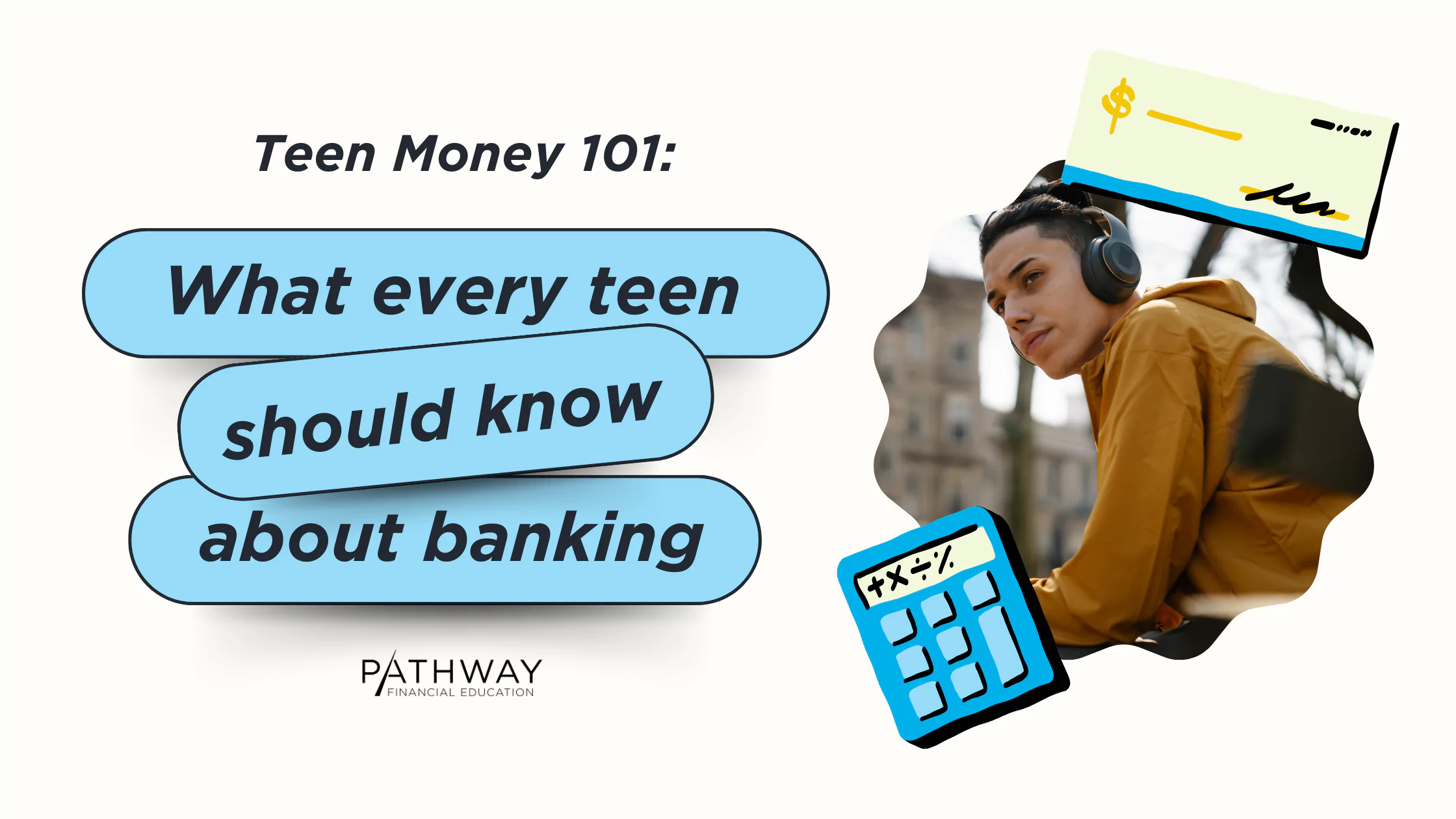
So you’re earning a little money — maybe from a part-time job, an allowance, or side gigs like babysitting or mowing lawns. Now what?
You could stash your cash in a drawer… but let’s be real — that’s not exactly secure, and it doesn’t help you grow your money.
Opening a bank account is one of the smartest money moves you can make in high school. It’s not just a place to store your cash — it’s a tool that helps you spend smarter, save faster, and take control of your money like a boss.
This guide breaks down everything you need to know about bank accounts, even if you’ve never had one before.
First Things First: Checking vs. Savings
You’ll hear these two words a lot — and it’s important to know the difference.
Checking Account = Your Everyday Spending Account
Think of this as your digital wallet.
-
Your paycheck (or allowance) goes in here.
-
You’ll use a debit card (not a credit card!) to buy things directly from your account.
-
Great for gas, food, online shopping, subscriptions — anything you spend money on regularly.
You can move money in and out of it anytime. It’s flexible and designed for spending.
Savings Account = Your Safe Place for Future Goals
This is where you put money you’re not planning to spend right away.
-
Helps you save up for things like a car, college, or even just a rainy day.
-
Some accounts earn interest — meaning your money can grow slowly over time.
-
You’re not supposed to dip into this every time you want snacks — this is your long game.
Use your savings to build financial security — even if it starts with just $5 at a time.
How to Open a Bank Account as a Teen
Good news: You don’t have to wait until you’re 18 to open an account.
Many banks and credit unions offer teen checking and savings accounts that you can open with a parent or guardian. Some even offer student-specific perks.
You’ll likely need:
-
A valid ID (school ID, state ID, or learner’s permit)
-
Your Social Security number
-
A parent/guardian’s ID and Social Security number
-
A small opening deposit (usually between $5–$25)
Pro tip: Look for banks with:
-
No monthly fees
-
No minimum balance requirement
-
Online/mobile banking access
-
Bonus: Ask if they offer student-specific perks (some do!)
The fewer fees and requirements, the better.
Common Banking Terms You Should Know
- Debit Card: A card connected to your checking account that pulls your money when you buy something — not borrowed money like a credit card.
- Direct Deposit: When your paycheck is sent straight to your account (no paper check).
- Overdraft: When you spend more than what’s in your account. It can lead to overdraft fees (up to $35!) unless you have protection in place.
- Interest: The money a bank pays you for keeping money in your savings account. It’s usually small — but still free money!
- Routing Number + Account Number: Unique numbers that identify your account. You’ll need these to set up direct deposit or connect to payment apps like Venmo or CashApp.
Using Your Accounts the Smart Way
Once you have your checking and savings accounts, here’s how to keep things running smoothly.
1. Use the Bank’s App
Most banks have a mobile app — download it! You can:
-
Check your balance before you spend
-
Set up alerts (like when your account drops below $20)
-
Transfer money between checking and savings
Your phone is now your financial control center.
2. Automate Your Savings
Set up a weekly or monthly automatic transfer — even just $5 a week. That way, your savings grow in the background without you even thinking about it.
Example: $10/week = $520/year. That’s a new laptop, a plane ticket, or half a used car.
3. Know Your Balance Before You Swipe
Before you buy something, check your account. Avoiding overdraft fees is way easier than dealing with them later.
Some banks let you “opt out” of overdrafts so your card is simply declined instead of letting you overspend and racking up fees. (It’s a smart setting — ask about it!)
4. Keep Savings Off-Limits
Make it a rule: savings are for goals, not random spending. You can even name your savings account something specific like:
-
“Car Fund 🚗”
-
“College Apps 💻”
-
“Emergency Money 💸”
Seeing your goal every time you log in is a great reminder.
Common Mistakes to Avoid
- Spending more than you have: Leads to overdraft fees and stress.
- Not checking your balance: Leads to… see above.
- Using your savings account like a second checking account: Keep those separate!
- Paying unnecessary fees: Always ask about account fees before you sign up. Look for free options.
- Linking your debit card to too many apps: Subscriptions (like Spotify, Netflix, or delivery services) can sneak up on you. Track them!
Real Talk: This Is a Skill That Builds Freedom
Banking isn’t just about money — it’s about independence. Once you understand how to manage your checking and savings accounts, you can:
- Get paid from your job
- Track your spending
- Set and reach savings goals
- Start building real financial confidence
And best of all? You’ll already know how to handle your money before you ever have to pay rent, deal with credit cards, or apply for student loans.
Up next, check out What Is Credit and Why It Matters (Even If You’re a Teen).




